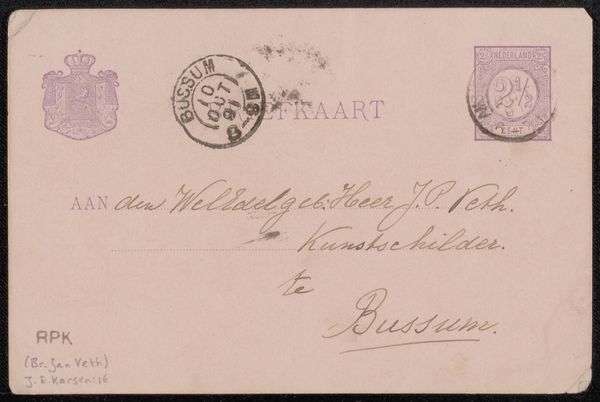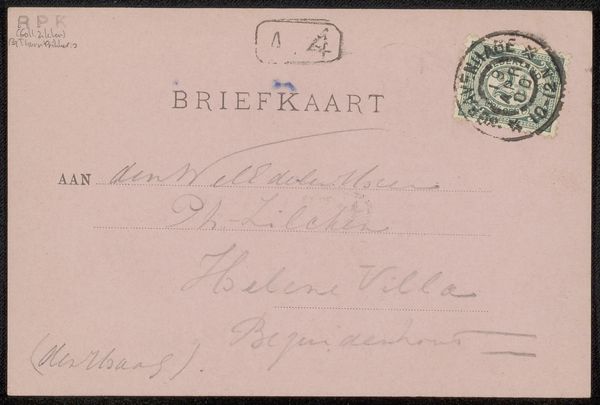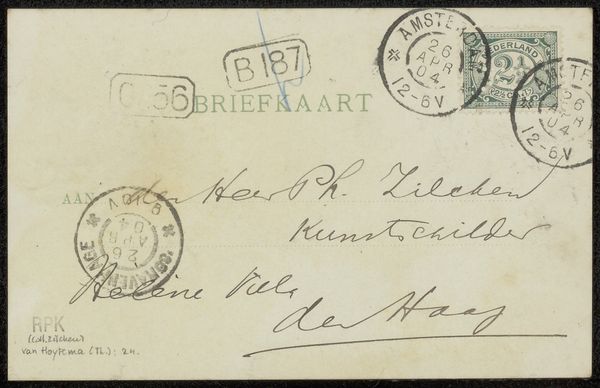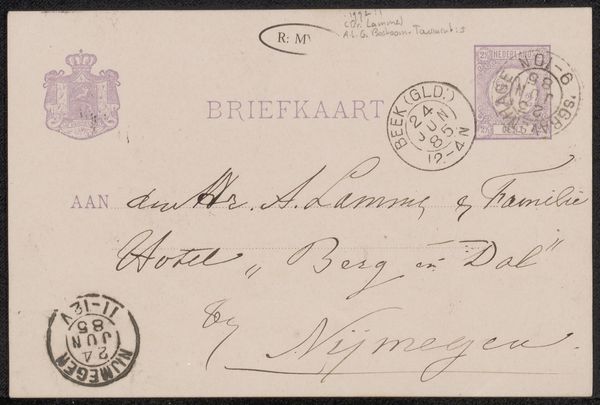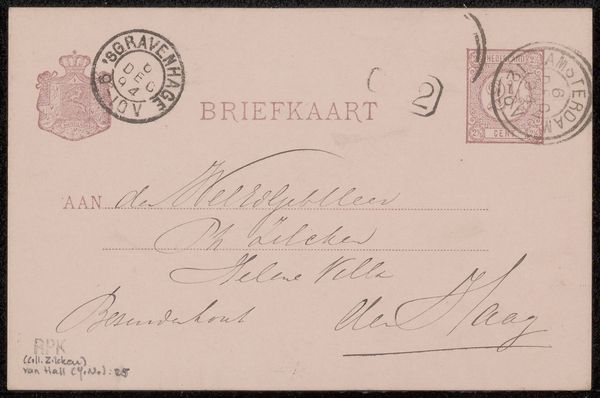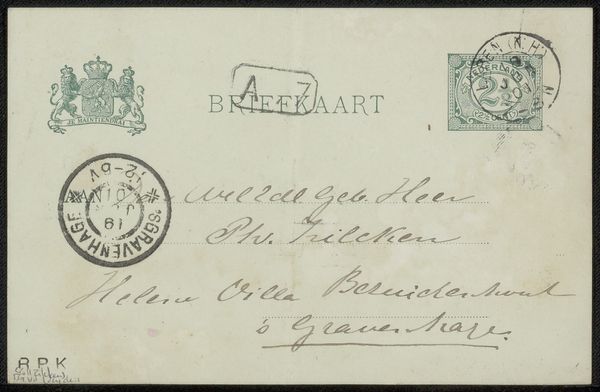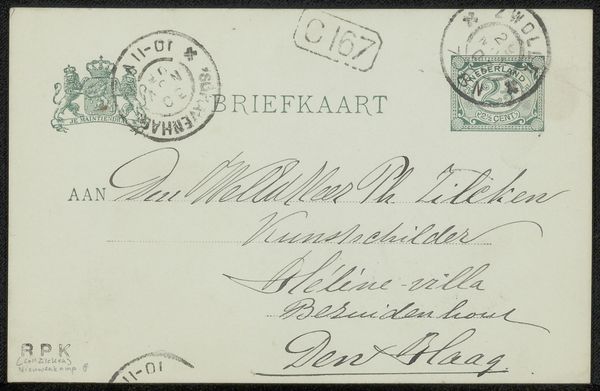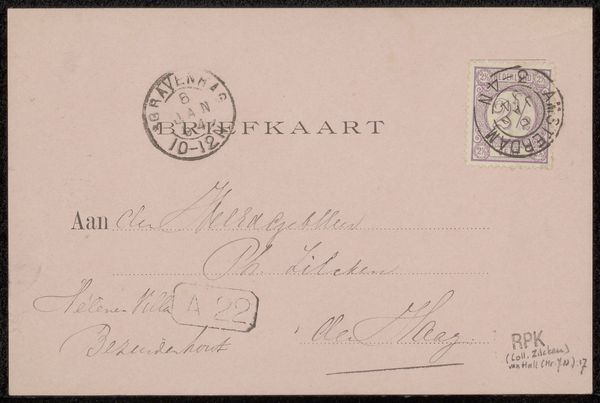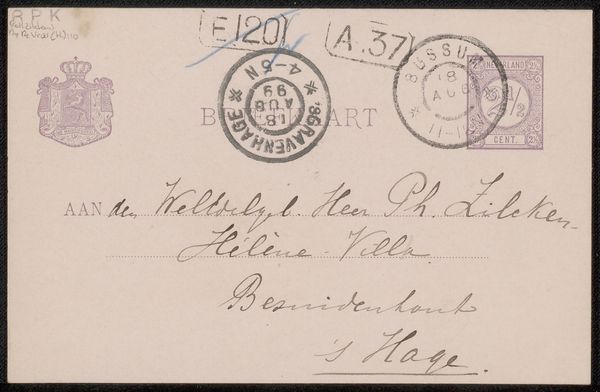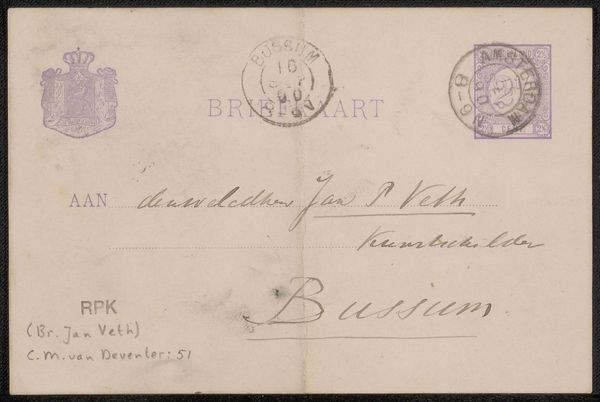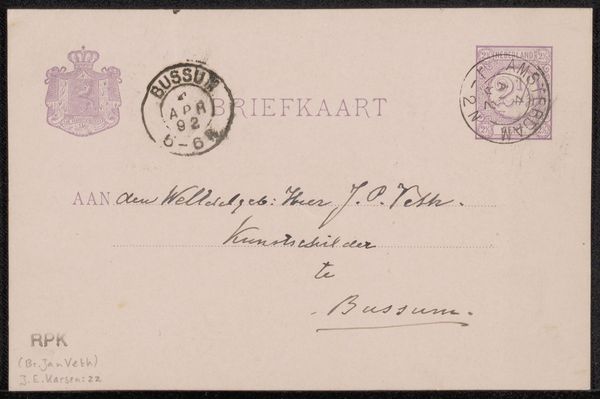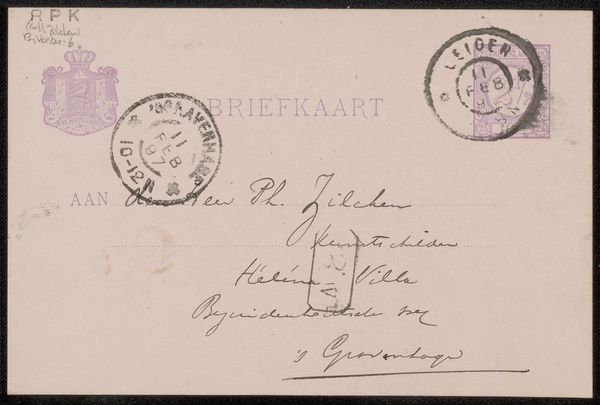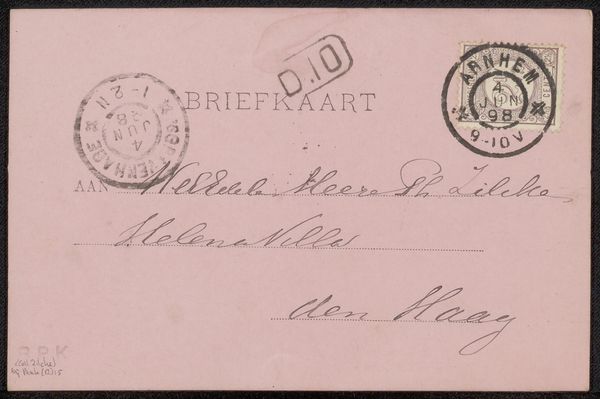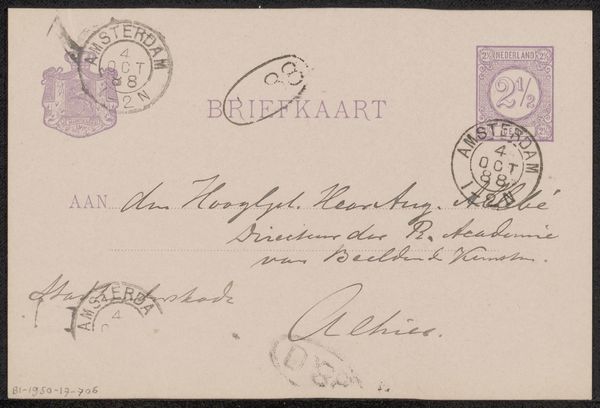
drawing, collage, print, paper, typography, pen
#
drawing
#
collage
#
hand-lettering
# print
#
hand lettering
#
paper
#
typography
#
pen
Copyright: Rijks Museum: Open Domain
Curator: This intriguing work is "Briefkaart aan Philip Zilcken," possibly from 1896, attributed to Eduard Karsen. It's a combination of drawing, collage, and print on paper, incorporating typography and pen work. What's your initial reaction? Editor: A ghostly fragment! I'm immediately struck by the muted palette, this faded pink and the gray typography. It evokes a sense of historical distance, the fragile nature of correspondence in a pre-digital era, and class. Curator: Note how Karsen uses the readymade postcard form, interrupting the presumed text space with the compositional weight of an inky postal stamp in the upper-center and then with a clean, graphically strong postage stamp at the upper right. This contrasts the address fields in the bottom half with elegant, calligraphic penmanship. The formal layout directs our eye along strong horizontal and vertical axes. Editor: Yes, and consider the address itself. This wasn’t just any letter. It was addressed to "Den Heer Ph. Zilcken," a Kunstschilder – an artist! – residing at Hilène-villa in The Hague. This positions Karsen within a network of artists; we glimpse a cultural ecosystem. We see evidence of a pre-WWI society, where correspondence was also very carefully arranged for public reading and judgment, given the postal employees who had access to this address. Curator: True. The layered collage, comprised of typography, handwriting and stamps creates interesting surface complexity that engages the eye and gives visual texture. The letter "K" from the artist's last name at the top-left balances, for me, with the value numbers inscribed in a graphic floral motif on the opposite edge. Editor: The stamp, slightly askew, suggests both bureaucratic authority and individual gesture. The Dutch postage—it marks a specific time, a cultural context—it connects to broader conversations of communication and networks of artists. Curator: Precisely, and the materiality is worth dwelling upon. The paper's fragility, the fading ink; they become potent signifiers, emphasizing transience. Editor: Looking closer makes us consider its creation—it's so intimate and direct. Thanks to new forms of dissemination via postage, the world gets more closely interconnected. Curator: Thank you for the insightful, socially driven read of this humble artifact; it complements my observations perfectly. Editor: And thank you; considering the artifice of Karsen's choices made the social, intellectual world behind this letter come into full, vital color for me.
Comments
No comments
Be the first to comment and join the conversation on the ultimate creative platform.
